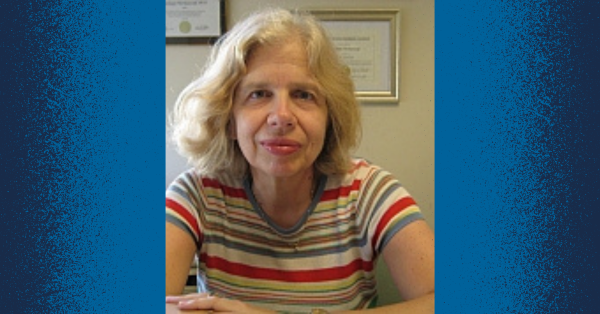
Distinguished Professor Emerita Xanthippi Markenscoff, from the UC San Diego Department of Mechanical and Aerospace Engineering, recently published two significant papers contributing to our understanding of deep earthquakes and dislocation dynamics.
The first, featured in the Journal of Geophysical Research (JGR), addresses deep earthquakes and marks a pivotal contribution to the field, solving the mystery of how surface level and deep earthquakes both present a Double Couple radiation although their mechanisms, pressures, and material properties are different. To explain this phenomenon, Markenscoff developed a model, rooted in instabilities in dynamic phase transformations under high pressure, that sheds light on seismic activity dynamics. Earth's surface encounters its highest seismic activity at 30 km depth, declining sharply at greater depths before peaking again in the Mantle-Transition-Zone (MTZ) at 400–700 km. The theoretical model, coupled with experimental and observational evidence, proposes that immense pressure (15-25 GPa) at the MTZ induces a phase transition causing a volume collapse, which at a critical pressure grows unstably, while minimizing the losses to expand the boundary of phase discontinuity.
For the last century, there has been an enduring inquiry into the nature of radiation during a volume collapse, with the presumed result being spherical radiation. However, Markenscoff’s theoretical model provides support that the energy due to the collapse under high pressure propels deep-focus earthquakes radiating not as a volumetric symmetric source, as once expected, but as Double-Couple shear seismic waves. These shears are anti-symmetric and are uninhibited by the immense symmetric pressure, which provides the energy to drive them.
Markenscoff’s model explains the nucleation of deep earthquakes in the MTZ, their Double Couple shear radiation, and their large energies (above 7.5 on the Richter scale). Her model also applies to other phenomena in nature including expanding magma chambers and planetary impact. Markenscoff received a commendation for her contributions to the understanding of deep earthquakes from the Miller Institute of Basic Science at UC Berkeley, where she previously served as a Visiting Miller Professor.
In another recent contribution to the field of continuum mechanics published in the Philosophical Transactions of the Royal Society (London), Markenscoff delves into the effective mass of a moving dislocation. Building upon the concept of 'the force on an elastic singularity,' she extends its application to dynamics by incorporating momentum flux. The non-uniform motion of dislocation results in a quasi-momentum (or pseudo-momentum) loss spanning from the scale of order ε to order ε^2, leading to an effective mass for the dislocation and a loss in kinetic energy across these scales. The understanding of the effective mass of dislocation is pivotal for connecting energy dynamics of defects across different scales within continua.
Markenscoff's research interests are centered around the dynamics and evolution of defects with inertia, encompassing dislocation motion, expanding inclusions with transformation strain, and moving phase boundaries. Her extensive body of work reflects her commitment to advancing our understanding of these complex phenomena. Having earned her Diploma in Civil Engineering from the National Technical University of Athens, Greece, and her Ph.D. from Princeton University, Professor Markenscoff currently contributes to research as a recalled faculty member in the Department of Mechanical and Aerospace Engineering at UC San Diego.
